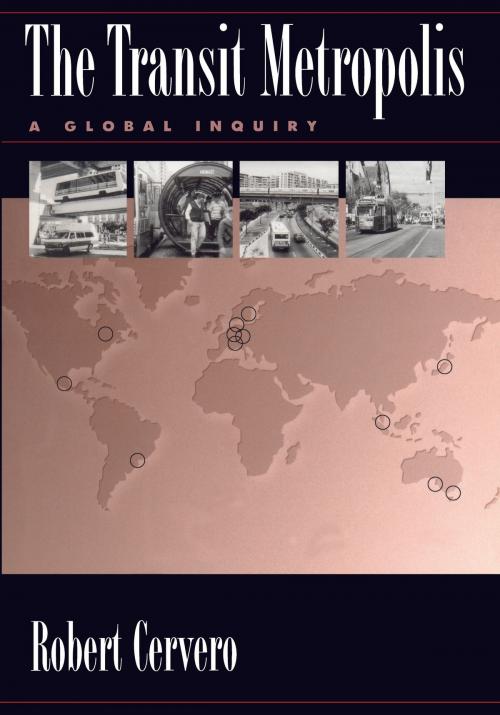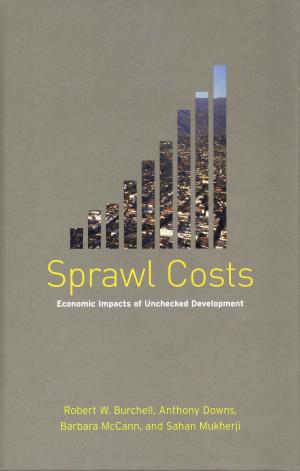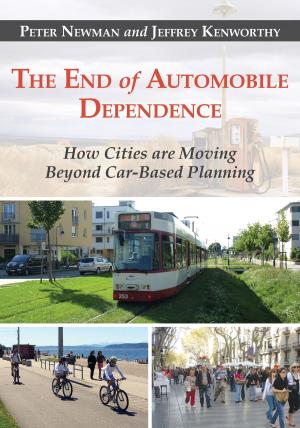The Transit Metropolis
A Global Inquiry
Nonfiction, Art & Architecture, Architecture, Planning, Reference & Language, Transportation| Author: | Robert Cervero | ISBN: | 9781597269315 |
| Publisher: | Island Press | Publication: | April 15, 2013 |
| Imprint: | Island Press | Language: | English |
| Author: | Robert Cervero |
| ISBN: | 9781597269315 |
| Publisher: | Island Press |
| Publication: | April 15, 2013 |
| Imprint: | Island Press |
| Language: | English |
Around the world, mass transit is struggling to compete with the private automobile, and in many places, its market share is rapidly eroding. Yet a number of metropolitan areas have in recdecades managed to mount cost-effective and resource-conserving transit services that provide respectable alternatives to car travel. What sets these places apart?
In this book, noted transportation expert Robert Cervero provides an on-the-ground look at more than a dozen mass transit success stories, introducing the concept of the "transit metropolis"—a region where a workable fit exists between transit services and urban form. Cervero has studied cities around the world, and he makes a compelling case that metropolitan areas of any size and with any growth pattern can develop successful mass transit systems.
Following an introduction that frames his argumand outlines the main issues, Cervero examines five differtypes of transit metropolises, with in-depth case studies of cities that represeach type. He considers the lessons of the case studies and debunks widely held myths about transit and the city. In addition, he reviews transit program efforts underway in five North American cities and discusses the factors working for and against their success. Cities profiled include Stockholm; Singapore; Tokyo; Ottawa; Zurich; Melbourne; Mexico City; Curitiba, Brazil; Portland, Oregon; and Vancouver, British Columbia.
The Transit Metropolis provides practical lessons on how North American cities can manage sprawl and haphazard highway developmby creating successful mass transit systems. While many books discuss the need for a sustainable transportation system, few offer examples of successful systems and provide the methods and tools needed to create such a system. This book is an invaluable resource for transportation planners and professionals, urban planners and designers, policymakers, and students of urban design and planning.
Around the world, mass transit is struggling to compete with the private automobile, and in many places, its market share is rapidly eroding. Yet a number of metropolitan areas have in recdecades managed to mount cost-effective and resource-conserving transit services that provide respectable alternatives to car travel. What sets these places apart?
In this book, noted transportation expert Robert Cervero provides an on-the-ground look at more than a dozen mass transit success stories, introducing the concept of the "transit metropolis"—a region where a workable fit exists between transit services and urban form. Cervero has studied cities around the world, and he makes a compelling case that metropolitan areas of any size and with any growth pattern can develop successful mass transit systems.
Following an introduction that frames his argumand outlines the main issues, Cervero examines five differtypes of transit metropolises, with in-depth case studies of cities that represeach type. He considers the lessons of the case studies and debunks widely held myths about transit and the city. In addition, he reviews transit program efforts underway in five North American cities and discusses the factors working for and against their success. Cities profiled include Stockholm; Singapore; Tokyo; Ottawa; Zurich; Melbourne; Mexico City; Curitiba, Brazil; Portland, Oregon; and Vancouver, British Columbia.
The Transit Metropolis provides practical lessons on how North American cities can manage sprawl and haphazard highway developmby creating successful mass transit systems. While many books discuss the need for a sustainable transportation system, few offer examples of successful systems and provide the methods and tools needed to create such a system. This book is an invaluable resource for transportation planners and professionals, urban planners and designers, policymakers, and students of urban design and planning.















